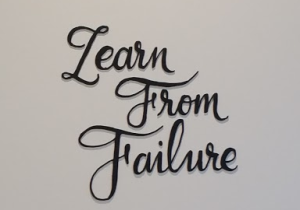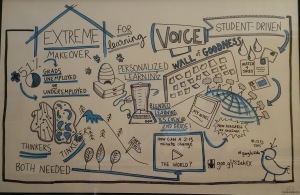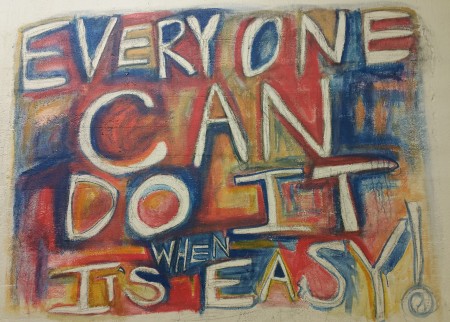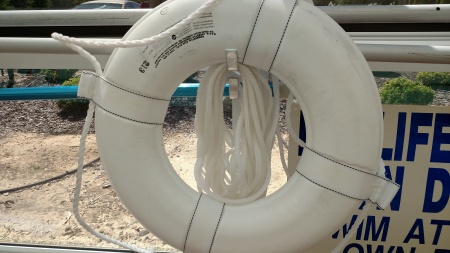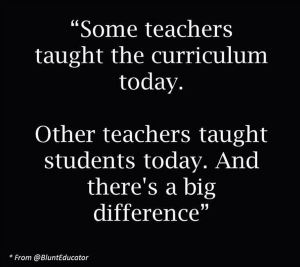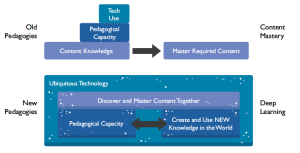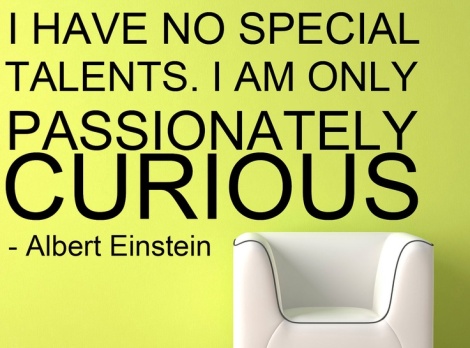
Over the past few months, I’ve been on a journey to explore the role that curiosity plays in deeper learning experiences for students. Michael Fullan’s work on deep learning as well as the emphasis on academic rigor with Webb’s Depth of Knowledge Levels made me curious to explore this question: “How might we cultivate an environment where educators sit in the passenger seat and are expert guides to empower students to drive their own learning?”
It seems to me that curiosity is the starting point to drive student engagement and learning. We’ll never get our students to the higher levels of DOK and Bloom’s Taxonomy on a regular basis without the 5th C of curiosity. And I believe that the best way to cultivate this skill in students is to practice being curious.
In October, the Teacher’s Guild hosted a collaboration sprint with the Nueva Innovative Learning Conference to ask the question, How might we spark student curiosity? I was fortunate to attend the conference and also work on the design sprint. The conference sessions, led by amazing experts from many academic fields, pushed my thinking and sparked my curiosity about a wide range of topics. At the close of the conference, I was energized to go back to work and implement some new ideas that developed from my experience. Visit the Teacher’s Guild to see the ideas generated at the conference and participate in their new collaboration on professional learning.
Below are some additional tips to help you cultivate your natural curiosity and incorporate curiosity into your work with educators and students:
Observe what’s happening around you and jot down notes to explore themes that you’re seeing in your classroom, at your school, or in your role as an administrator. Form a team to begin designing innovative solutions.
Surround yourself with others inside and outside of the education field who are also curious. Don Tomlin, an investor in my hometown of Columbia (SC), talked at Startup Grind about developing your relational database. By developing relationships with a wide range of people, you’ll expose yourself to new ideas which you can bring into your own work. My thinking was recently stretched when I spent several days with Intel visionaries from around the world. We met as strangers but ended as friends and colleagues. You will become more curious when you stretch beyond your comfort zone.
Learn to listen and ask open-ended questions. In his book A Curious Mind: The Secret to a Bigger Life,”Brian Glazer shares his years of experience as a producer for movies including Apollo 13 and A Beautiful Mind. He learned early in his career that asking questions and listening to the answers would give him new ideas for movies. He made a point of seeking out meetings with people who he was curious to know.
Develop a culture with your co-workers of using techniques which spark conversation and curiosity. When someone mentions a current challenge that they are facing, use the 5 Whys method to get to the root cause. By asking “why” at least five times, you’ll come much closer to developing an action plan to correct the problem. The critical friends protocol includes starting with “I like” and then asking “I wonder…” Use this questioning protocol when you’re discussing a project with your colleagues. Finish the conversation with next steps based on feedback from the questions.
We’re all born curious. As young children, we asked questions about everything. As we grew older, we were told to listen and stop questioning authority. To keep student curiosity alive, implement learning models that include project-based learning and passion-based learning. Let students develop generative topics that will allow them to follow their interests.
Do something outside of your comfort zone. Explore a topic that you want to learn more about and have students guide you in that learning. I recently helped with organizing a Google Devfest event. I’m just a tinkerer when it comes to coding, but I didn’t let that stop me from participating in and leading sessions. My favorite learning came from elementary and high school students who taught me how to get started with using an Arduino board. I’ve got the board now and am looking forward to connecting with them to learn more.
Our future depends on cultivating curiosity in our students. Start today with a question that you want to explore and ask your students and co-workers to join you in curious pursuits.
